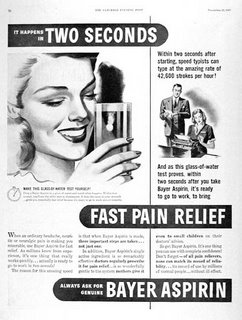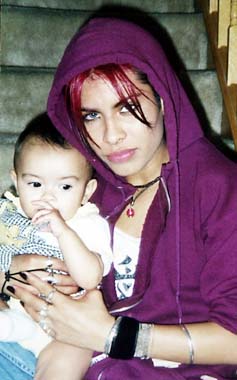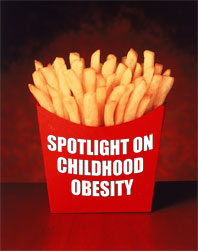
I received this, dated June 5, from Julia Davis at
The Kaiser Family Foundation (KFF) today, and wanted to pass it long. The partnership between KFF and
MTV has been remarkably successful, and is a real benchmark for anyone interested in public health campaigns that target a large youth audience.
"Today, think MTV and the Kaiser Family Foundation – as part of their think: Sexual Health campaign and with support from the National Alliance of State and Territorial AIDS Directors (NASTAD), iFilm and WebMD – announced the creation of think HIV, the first ever multi-platform, interactive community for this first generation of Americans who have lived their entire lives during the AIDS epidemic. The initiative seeks to provide a platform to foster dialogue and active engagement on the topic of HIV/AIDS and especially its impact on young people, as well as provide information and resources to young people about HIV/AIDS. According to UNAIDS, half of new HIV infections worldwide are among those under the age of 25.
“The MTV audience has never known a day without HIV, and young people around the world are at the center of the epidemic,” said Brian Graden, President of Entertainment for MTVN Music Group and President of Logo. “We have a long history of educating and empowering our audience on this issue, and while progress has been made, there is still work to be done. think HIV will offer our viewers a new, interactive and safe place to learn about and fight it.”
“By utilizing the latest media technologies, think HIV gives voice to a generation of young people about a topic that deeply affects them in unique and powerful ways,” said Tina Hoff, Vice President and Director of Entertainment Media Partnerships for the Kaiser Family Foundation. “A core tenant of work has always been to go where young people go to reach them with information and this new joint venture brings us into the new age of media.”
think HIV will feature the following components: * think HIV Online Community – think HIV online will serve as an interactive community that will launch following the premiere of the “THINK HIV” documentary on August 18th. The site will be an engaging and interactive, safe space for young people to share their personal stories through videos, photos and blogs and text about HIV/AIDS. The user-friendly site will also provide easy access to information and resources about HIV/AIDS including prevention and testing as well as how to get involved in the global fight – including access to health information, resources and the online community at WebMD. Visitors will be able to upload their videos to the site via software from iFilm. The Alive at 25 HIV Vlogging Competition winners will be featured on the site with official state information about HIV/AIDS, links to local services, and key resources for young people developed in partnership with NASTAD members.
* Alive at 25 – National HIV Vlogging Competition – Beginning June 5th and running until June 30th, young people ages 13-25 from around the country are encouraged to submit essays of 250 words or less at
think.mtv.com on why they should be selected as the exclusive think HIV vlogger (video blogger) for their state. One winner will be selected from each state by Kaiser, MTV and NASTAD, and will be given a video camera to vlog about what HIV/AIDS means from their unique perspective. Vlogs will go live on the think HIV website on August 18th. One vlogger will be awarded a grand prize VIP trip to the MTV studios in New York, and earn the opportunity to showcase their vlog on MTV. For details about the competition visit
www.think.mtv.com.
* THINK HIV Documentary – MTV News & Docs – in partnership with Kaiser – will produce “THINK HIV,” a documentary in which young people themselves tell the story of how their generation has been impacted by the virus. Part memorial, part testimony, these short vignettes filmed entirely by infected or affected young people will paint a raw, intimate, and informative portrait of the epidemic’s impact on their lives. The half hour show will premiere on MTV on August 18th — the last day of the International AIDS Conference in Toronto.
think HIV builds on both MTV and Kaiser’s long-term commitment to educating and empowering young people in the fight against HIV/AIDS, in part through their 10-year partnership, currently called think: Sexual Health. To date, the Emmy and Peabody Award winning partnership has garnered more than 100 million viewers to its documentaries, 1.2 million calls to the toll-free hotline (1-888-BE-SAFE-1), and has distributed more than 450,000 informational guides. More than two out of three think: Sexual Health campaign viewers are more likely to use condoms, talk to their partner about safer sex, and to get tested for HIV or other STDs."





















